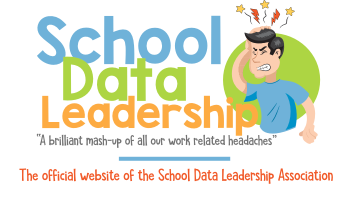Standard 4 - Planning Instruction and Designing Learning Experiences for All Students
Teachers use knowledge of students' academic readiness, language proficiency, cultural background, and individual development to plan instruction. They establish and articulate goals for student learning. They develop and sequence long-term and short-term instructional plans to support student learning. Teachers plan instruction that incorporates appropriate strategies to meet the diverse learning needs of all students. They modify and adapt instructional plans to meet the assessed learning needs of all students.
4.1 - Using knowledge of students' academic readiness, language proficiency, cultural background, and individual development to plan instruction
As teachers develop, they may ask, “How do I…” or “Why do I…”
- incorporate students' prior knowledge and experience in my curriculum and instructional planning?
- use knowledge of my students' lives, their families, and their communities to inform my planning of curriculum and instruction?
- use knowledge of my students' individual cognitive, social, emotional, and physical
- development to plan instruction and make appropriate adaptations to meet students’ unique needs?
- plan lessons and units that promote access to academic content standards for all students?
- use knowledge of my English learners’ levels of language proficiency to plan instruction that supports their subject matter learning and academic language development?
- use knowledge of my students’ diverse learning needs to plan instruction that supports their learning?
4.2 - Establishing and articulating goals for student learning
As teachers develop, they may ask, “How do I…” or “Why do I…”
- build on the strengths, interests, and needs of all students to establish high expectations for learning?
- establish long-term and short-term goals that are based on academic content standards and reflect students’ strengths, interests, and needs?
- determine learning goals that address all students' language abilities and diverse learning needs?
- establish learning goals that address school, district, and community expectations?
- work with students and families to establish learning goals?
- develop goals that prepare students for successful transition to their next learning environment?
- communicate clear, challenging, and achievable expectations for students?
4.3 - Developing and sequencing long-term and short-term instructional plans to support student learning
As teachers develop, they may ask, “How do I…” or “Why do I…”
- design an instructional program that considers the long-term and the short-term?
- use assessment results for long-term and short-term planning?
- incorporate diverse subject matter perspectives in my planning?
- select and sequence instructional strategies appropriate to the complexity of the lesson content and to student learning needs?
- plan an instructional program that supports students' second language learning and diverse learning needs?
- incorporate my professional expertise and knowledge of my students into a prescribed curriculum, pace, and district assessment calendar?
- collaborate with colleagues to make instructional decisions?
- design instruction so that students participate in setting and achieving their individual learning goals?
4.4 - Planning instruction that incorporates appropriate strategies to meet the learning needs of all students
As teachers develop, they may ask, “How do I…” or “Why do I…”
- develop unit and lesson plans that build on and extend students' understanding of subject matter?
- ensure that each instructional strategy is related to learning goals?
- plan instruction to allow enough time for student learning, review, and assessment?
- use my knowledge of subject matter and my students to plan and appropriately pace instructional activities within a lesson and over time?
- check for understanding, prepare for adjustments, remediate or accelerate instruction, and individualize when appropriate?
- address the ELD standards appropriately, based on my English learners’ levels of language acquisition?
- address the IEP goals and objectives of my students with special needs?
- select materials, resources, and technologies to support the learning needs of English learners and students with special needs?
4.5 - Adapting instructional plans and curricular materials to meet the assessed learning needs of all students
As teachers develop, they may ask, “How do I…” or “Why do I…”
- interact with my colleagues to identify typically difficult concepts or skills for students in order to re-examine and strengthen plans for future lessons?
- proactively prepare for appropriate adjustments based on my assessment of student learning while teaching?
- strengthen existing plans for students at identified levels of English proficiency?
- strengthen existing plans for students with special needs?
- reflect on my successes and struggles and apply what I have learned about effective and ineffective strategies to existing plans for future lessons?
- reflect on my successes and struggles with the use of curriculum and apply what I have learned to existing plans for future lessons?
- capture what I have learned during a particular lesson so that I can revisit my plans in advance of teaching the lesson again?
